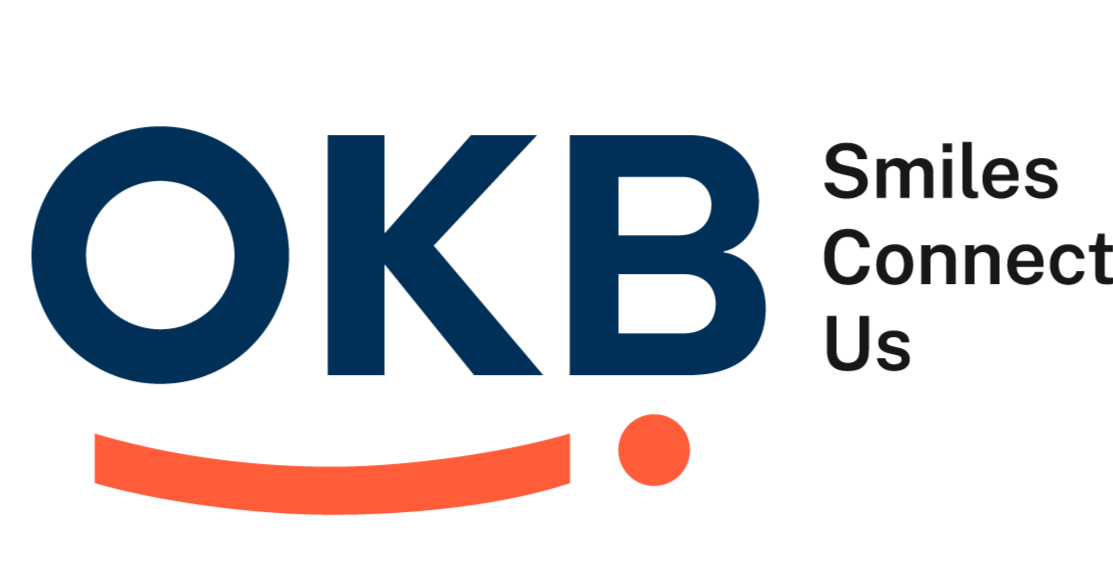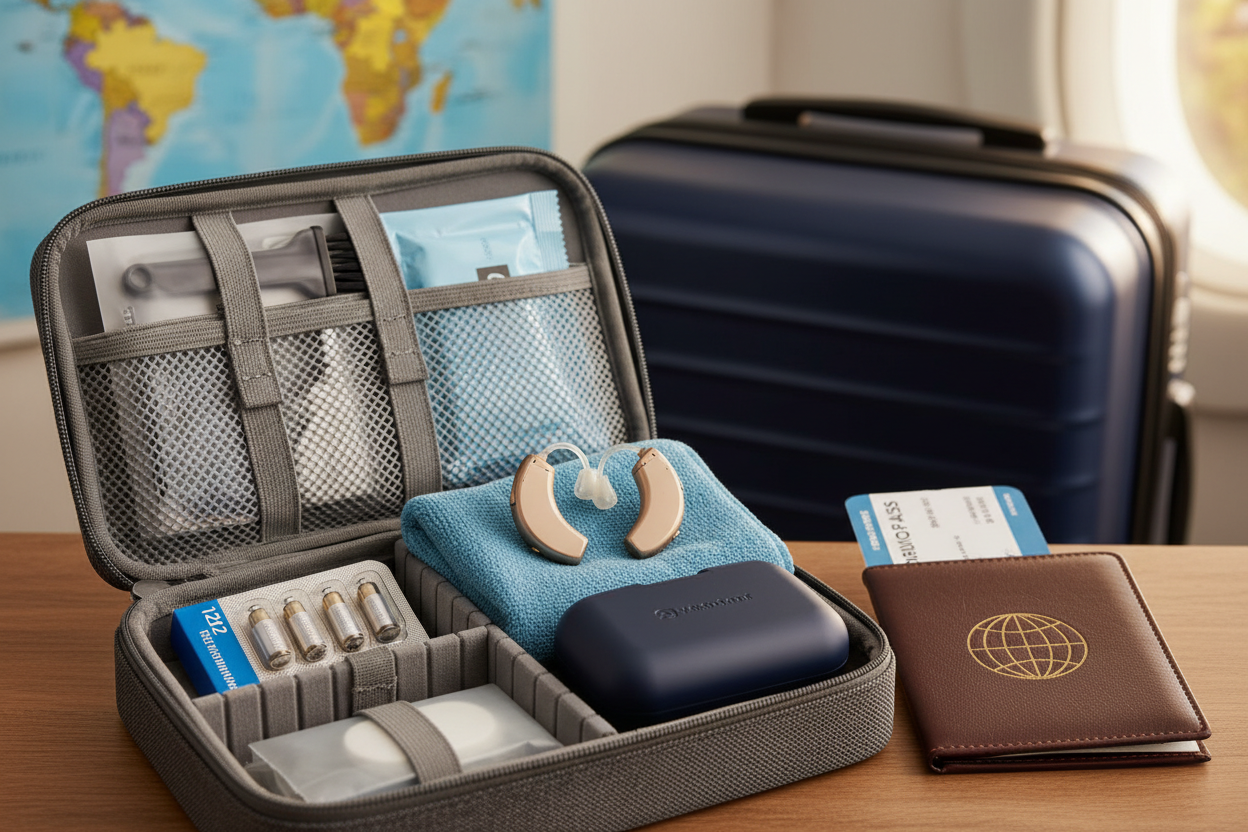1. The baseline: What does Original Medicare cover (or not cover) when it comes to hearing aids?
Understanding what the standard Medicare Parts A & B cover is the foundation—because MA plans build on this baseline.
-
Under Original Medicare (Parts A & B), hearing aids and routine exams for fitting hearing aids are not covered:
“Medicare doesn’t cover hearing aids or exams for fitting hearing aids.” (Medicare) -
Original Medicare may cover certain medically necessary hearing-related services (for example diagnostic hearing and balance exams) but again, not the hearing aids themselves. (Humana)
-
The statutory language: The exclusion is in the Social Security Act, under section 1862(a)(7) which states that devices such as hearing aids or exams for prescribing/fitting them are excluded. (Center for Medicare Advocacy)
-
Why? Historically, when Medicare was designed in the 1960s, hearing aids were viewed as “routine” and inexpensive; such devices were assumed to be handled by the beneficiary. (medicareresources.org)
Bottom line for OKB Hearing patients: If you are on Original Medicare only, you should expect that hearing aids—including OTC hearing aids—are not automatically covered. You’ll likely have to pay out of pocket or rely on supplemental benefits or other programs.
2. The emergence of OTC hearing aids: What changed and why it matters
Before we dive into how Medicare Advantage plans might behave in 2026, it’s crucial to understand what OTC hearing aids are and how they reshape the conversation.
What are OTC hearing aids?
-
OTC (over-the-counter) hearing aids are devices that can be purchased directly by adults with mild to moderate hearing loss without the need for a prescription or a hearing-aid specialist fitting.
-
The Food and Drug Administration (FDA) rule allowing such devices (for certain categories of hearing loss) took effect as a significant step in 2022.
-
Because OTC hearing aids reduce some of the costs associated with traditional prescription hearing aids (fittings, infrastructure, specialist time), they are increasingly attractive to hearing-care providers like OKB Hearing and to patients.
Why does this matter for Medicare Advantage?
-
Because OTC hearing aids are a lower-cost option, MA plans may view them more favorably when designing supplemental hearing benefits (since the cost burden is lower).
-
For hearing-care providers (like OKB Hearing) the availability of OTC hearing aids means you might have more flexibility in models and pricing, which in turn means benefit design by MA plans might shift.
-
Importantly, the presence of OTC hearing aids does not guarantee coverage under Medicare Advantage—it simply opens more possibilities.
Key takeaway:
When you’re working with OKB Hearing or comparing MA plans, keep in mind that the hearing-aid marketplace is evolving thanks to OTC devices—but insurance coverage lags and must be reviewed carefully.
3. What Medicare Advantage (Part C) plans currently do for hearing, and how that sets the stage for 2026
Unlike Original Medicare, MA plans are offered by private insurers and have more flexibility to include “extra benefits” beyond what Parts A & B cover. Let’s explore what they typically offer today (2025) and how that transfers to 2026.
What MA plans currently offer
-
Many MA plans include supplemental hearing benefits—this can cover hearing exams, service/maintenance of hearing aids, and sometimes a hearing-aid benefit (either explicitly or through vendor discounts). For example: “Some Medicare Advantage (MA) plans offer extra benefits that Original Medicare doesn’t cover — like … hearing.”
-
According to the Hearing Industries Association (HIA), under Medicare Advantage (Part C) approximately 97% of enrollees have access to some hearing health benefit, and about 95% of MA enrollees are in plans that provide both hearing exams and hearing aids. (Hearing Industries Association)
-
But—and this is key—the hearing-aid benefit under MA plans varies widely: dollar-limits (for example only up to $1,000 or less), frequency limits (“once every 3 years”), brand restrictions, vendor networks, copays etc. (medicareresources.org)
-
For OTC hearing aids specifically, while the HIA mentions “some programs also provide an OTC allowance for select items at no additional cost” under MA plans, it does not guarantee universal coverage.
What to watch for in 2026
-
For the 2026 plan year, MA plans may continue to expand or refine their hearing benefits. According to industry analyses, many plans are “expanding extra benefits like ... hearing coverage.” (Brickhouse Agency)
-
However, there’s also caution: some sources note that MA plans “might have fewer supplemental benefits” in 2026 as regulatory guardrails increase on Special Supplemental Benefits for the Chronically Ill (SSBCI). (Investopedia)
-
Thus, while hearing benefits may expand, they are not guaranteed, and the specific design (limits, eligibility, covered devices such as OTC) will differ by plan and region.
Implications for clients
When working with MA plans and clients, the key questions are:
-
Does the MA plan specifically list hearing aids (including OTC devices) as a covered benefit in their Evidence of Coverage (EOC)?
-
What is the dollar cap for hearing aids? What is the frequency limit?
-
Does the plan require that the hearing aids be purchased via a designated vendor or network (such as OKB Hearing)?
-
Does the plan distinguish between standard prescription hearing aids and OTC hearing aids (and if so, what are the cost-sharing terms)?
-
Are hearing‐aid fittings, ear molds, follow-up visits included?
-
What are the copays, and are they separate from device cost?
4. The big question: Will MA plans cover OTC hearing aids in 2026? The short answer – “maybe, but with caveats”
Here’s what we know — and what we still don’t — about OTC hearing-aid coverage under Medicare Advantage for 2026.
What we do know
-
OTC hearing aids are now a recognized category of hearing aids for adults with mild to moderate hearing loss.
-
MA plans already include hearing benefit coverage and some mention OTC allowances.
-
Industry commentary suggests expansion of hearing benefits under MA plans for 2026.
-
Legislative efforts are underway to change Medicare law to cover hearing aids broadly (see Section 5 below).
What we don’t know (yet)
-
There is no guarantee all MA plans will cover OTC hearing aids in 2026.
-
There is no universal regulation mandating MA plans to cover OTC hearing aids—coverage depends on the individual plan’s benefit design.
-
Specific details (dollar amounts, copays, brand/vendor requirements, OTC vs prescription device differentiation) will vary widely by plan.
-
Some benefits may still favor traditional (prescription) hearing-aid models rather than OTC devices.
So, for 2026: What to expect
-
Expect that MANY MA plans will offer some hearing‐aid benefit, and a subset of those will explicitly cover OTC hearing aids, but not all.
-
When a plan does cover OTC hearing aids, it may offer:
-
A set allowance (e.g., up to $1,000 per ear or per pair) for OTC hearing aids.
-
A vendor list (you may have to purchase from approved providers).
-
A requirement of a hearing exam/fitting (even though OTC devices are less regulated).
-
Device cost + service cost either bundled or unbundled.
-
Copays or coinsurance may still apply.
-
5. Legislative & regulatory change on the horizon
For those looking ahead, it’s important to note that the statutory exclusion of hearing aids under Original Medicare is being challenged—and that may eventually influence MA plans, hearing-aid providers, and the industry.
-
The bill Medicare Hearing Aid Coverage Act of 2025 (H.R. 500) was introduced in January 2025 with the objective to amend the Social Security Act and remove the exclusion of hearing aids and examinations from Medicare coverage. (Congress.gov)
-
If passed, the effective date in the bill is January 1, 2026 (for items and services furnished on or after that date).
-
As of now, this is proposed legislation—not yet law—so coverage under Original Medicare remains unchanged. But it signals a strong policy momentum.
-
On the regulatory side, the new CPT codes for hearing‐device services (effective Jan 1 2026) show that audiology/hearing-aid service providers are adapting for future reimbursement changes.
6. How to evaluate your 2026 Medicare Advantage plan for hearing/OTC hearing aid coverage
As an informed consumer, you’ll want to walk through a checklist when comparing MA plans to gauge OTC hearing-aid coverage. Here’s a step-by-step guide.
Step 1: Review the Evidence of Coverage (EOC) / Summary of Benefits
-
Does the plan list hearing benefits under “Extra Benefits” (beyond Part A & B)?
-
Is there a line item for “hearing aids” or “hearing-aid benefit (including OTC devices)”?
-
What is the annual dollar limit (or lifetime cap) for hearing aids under the plan?
-
What is the frequency limit (every 2 years, 3 years, etc.)?
-
Does it specify OTC hearing aids (or does it limit to “prescription hearing aids”)?
-
Are there vendor/network requirements (must you use a specific provider or retailer)?
-
What are the service/fitting costs (copays/coinsurance) associated with the hearing aids and fittings?
-
Are the hearing-aid service/fitting costs included in the device allowance? Or separate?
Step 2: Understand vendor/provider network and device eligibility
-
Are the OTC devices you are considering eligible under the benefit? (Sometimes plans limit to specific brands/models).
-
If OTC devices are not covered—what is covered? Traditional hearing aids only?
-
Does the plan require a hearing-aid fitting or exam? Even if OTC devices generally don’t require prescription/fitting, the plan may still ask for a vendor visit.
-
Ask: Are “hearing-aid accessories,” “batteries,” “ear moulds,” “follow-up visits” covered?
Step 3: Calculate the actual out-of-pocket cost & value
-
What is the allowance for hearing aids? If it’s $500 or $1,000 but you may need $2,500 set of hearing aids, then the client still has substantial cost.
-
If the plan covers OTC devices but limits to $300 per ear, ask: Are the OTC devices meeting your hearing needs (quality, warranty, service)?
-
Compare devices: An OTC hearing aid may cost less—but service, fitting adjustments and support matter.
-
Consider whether you’d pay extra for a higher-level device beyond what the plan allowance covers.
Step 4: Anticipate changes in 2026 & beyond
-
Verify: Are there changes in the hearing benefit for the upcoming year (for example check the ANOC – Annual Notice of Change – sent by the plan) that show plan changes to hearing benefits?
-
Investigate: Does the plan allow rollover of unused hearing-aid allowance (some plans do, some don’t).
-
Since legislation and regulation may evolve, advise clients to review their coverage annually.
Step 5: Align with clinical needs and client profile
-
If the client has mild to moderate hearing loss, OTC hearing aids might be sufficient and more likely to be covered (or affordable).
-
If the client has severe or complex hearing loss, then prescription hearing aids (which may or may not be covered) might be the only clinically appropriate option. For these clients, ensure the MA plan supports high-end devices and sufficient allowance.
7. Practical scenarios: How clients can apply this in 2026
Let’s walk through three hypothetical client scenarios to illustrate how the interplay between MA plan benefits, OTC hearing aids, and hearing care provider strategy might work in 2026.
Scenario A – Mild hearing loss + interested in OTC hearing aids
Client profile: Jane, age 67, mild bilateral hearing loss, comfortable with technology. She has a Medicare Advantage plan and is interested in an OTC hearing aid rather than a high-end prescription model.
-
Jane brings in her EOC; we identify hearing aids are listed under extra benefits with a $1,000 per pair allowance every 3 years.
-
The EOC mentions “eligible hearing aids (including OTC models) when purchased through an approved vendor.” Good—OTC devices are included.
-
We proceed, educate Jane on realistic expectations for OTC devices (technology level, need for follow-up, warranty) and schedule fitting/adjustment.
-
We also advise Jane to check for future plan changes in 2027, and confirm whether the humming/maintenance costs are covered or if she’ll pay separately for batteries.
Outcome: Jane obtains an OTC hearing aid with minimal out-of-pocket cost thanks to the MA plan’s hearing benefit and OTC eligibility.
Scenario B – Moderate to severe hearing loss + prescription hearing aids needed
Client profile: Bob, age 72, moderate-to-severe hearing loss. He uses hearing aids now and is looking at his options. He has a Medicare Advantage plan.
-
Bob’s plan lists a hearing-aid allowance of up to $700 per ear every 5 years—but only applies to “prescription hearing aids from approved vendor.” OTC models are not mentioned.
-
We discuss whether Bob might consider a lower-cost prescription device or a potentially covered device model under the allowance. We also check if the plan offers an optional upgrade option (where Bob pays extra for premium device).
-
We help Bob evaluate: the cost vs benefit, financing options, and what future allowance will look like (does a new allowance start each 5 years?).
-
We also show that if Bob changed to a different MA plan at next Annual Enrollment Period, he might find a plan with better hearing benefit (for example allowance $1,500/pair or including OTC eligibility) but must weigh network/provider changes.
Outcome: Bob makes an informed choice, realizing that under his current plan OTC hearing aids are not covered, and he’ll need to evaluate whether the premium device out-of-pocket cost fits his budget.
Scenario C – Checking plan change for 2026
Client profile: Linda, age 70, currently has a Medicare Advantage plan that includes hearing aids (allowance $800/pair every 4 years). She uses modest hearing aids and is considering switching to OTC devices, or reviewing if her plan for 2026 improves.
-
We tell Linda: For the 2026 plan year, you’ll receive an ANOC (Annual Notice of Change) from your insurer that details any benefit alterations. Some MA plans are expanding hearing benefits or making them more accessible for OTC devices.
-
We review her ANOC: This year the plan states “Hearing benefit includes OTC hearing aids purchased through our negotiated vendor, allowance increased to $1,000/pair every 3 years.” Good—there’s an improvement and OTC eligibility is added.
-
We assist Linda in selecting from an OTC hearing-aid model, verifying with the vendor that they are an approved provider under her plan.
-
We advise Linda to still maintain realistic expectations for OTC devices (features, warranty, support) and to check whether the vendor + plan network covers follow-up service costs.
-
We also remind Linda that plan benefits may still change year-to-year, so she should review each year before the open-enrollment deadline.
Outcome: Linda capitalizes on improved OTC hearing-aid coverage in her MA plan for 2026 and proceeds with a cost-effective hearing-aid purchase.
8. Key questions that clients should ask their Medicare Advantage plan
When you or your client are considering hearing-aid purchase under an MA plan, these questions are crucial:
-
Is OTC hearing-aid coverage explicitly included?
-
Does the plan mention “OTC hearing aids” or only “prescription hearing aids”?
-
Are there brand/model restrictions or only specified vendors?
-
-
What is the dollar allowance and frequency?
-
How much does the plan pay per ear or per pair?
-
How often can you use the benefit (every 2, 3, 4, or 5 years)?
-
-
What is the network-vendor requirement?
-
Must you buy the hearing aid from a specific provider or approved list?
-
What happens if you choose alternative vendors?
-
-
What are out-of-pocket costs beyond the allowance?
-
Copays or coinsurance for device? Fitting/service?
-
Are follow-up visits and battery/replacement costs included?
-
-
Are service/fitting/maintenance costs included?
-
Hearing aid benefit may include device cost but not service; clarify.
-
Does the vendor/plan include warranty, remote adjustments, return policy?
-
-
Is coverage for mild-moderate hearing loss only?
-
Does the plan differentiate between OTC devices (for mild-moderate loss) vs. prescription devices (for severe loss)?
-
This matters for clinical suitability.
-
-
What happens if you switch plans next year?
-
Can you “use” the allowance now or will it reset?
-
Does remaining allowance carry over?
-
What if you buy now and change plan next year — will new plan honor the vendor/service?
-
-
Have you reviewed the upcoming year’s plan changes?
-
For 2026 benefits may shift—ensure you’ve reviewed the ANOC or plan summary for 2026.
-
Some plans may reduce or change hearing benefits under new guardrails for supplemental benefits.
-






分享:
Do Hearing Aids Interfere with Fitness Trackers or Smartwatches?
Does Medicare Part B Cover Hearing Tests?